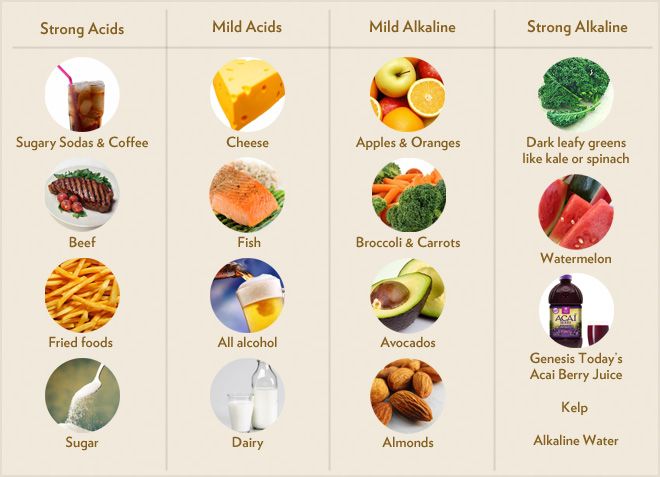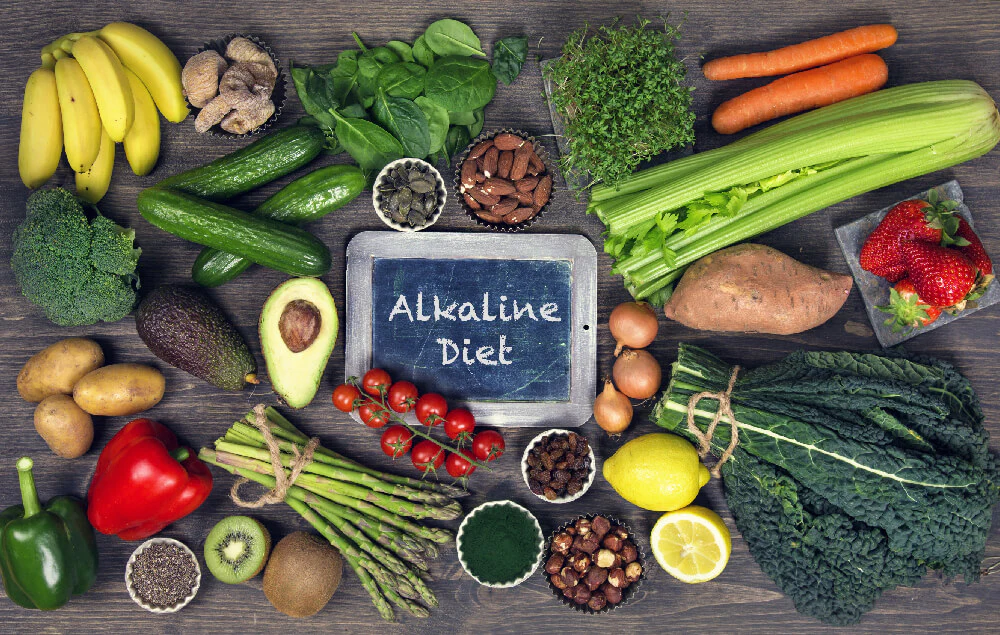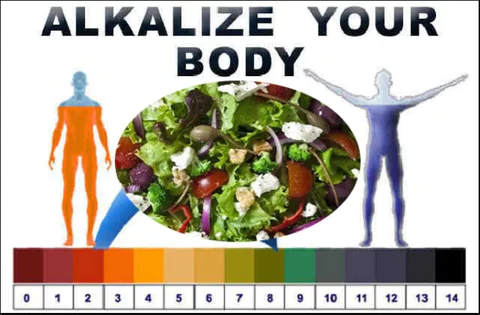Contents
Introduction:
Alkalinity, a fundamental aspect of human physiology, plays a pivotal role in maintaining optimal health and well-being. At its core, alkalinity refers to the body’s capacity to maintain a slightly alkaline pH level, a delicate equilibrium that influences various biochemical processes. This introduction delves into the multifaceted dimensions of alkalinity, elucidating its definition, the critical significance of sustaining body pH, and the myriad health benefits associated with achieving an alkaline balance.
Definition of Alkalinity:
Alkalinity is a measure of the body’s acid-base balance, determining the concentration of alkaline substances in bodily fluids. These substances, including bicarbonate ions, work harmoniously to neutralize excess acids, thereby preventing fluctuations in pH that could disrupt cellular functions. The delicate dance between acidity and alkalinity is integral to the intricate symphony of human physiology.
Importance of Maintaining Body pH:
The human body functions optimally within a narrow pH range, and any deviation from this balance can have profound implications for health. Maintaining a slightly alkaline pH is crucial for preserving cellular integrity, enzymatic activities, and the overall functionality of vital organs. This section explores how deviations from the optimal pH range may contribute to various health issues and emphasizes the overarching importance of maintaining a balanced pH environment.
Common Health Benefits of Alkalizing the Body:
Alkalizing the body goes beyond merely adjusting pH levels; it serves as a holistic approach to promoting wellness. From bolstering the immune system to enhancing nutrient absorption, this subsection provides a comprehensive overview of the numerous health benefits associated with alkalinity. Furthermore, it delves into the potential positive effects on inflammation reduction, improved energy levels, and the prevention of chronic diseases.

As we embark on an exploration of alkalizing the body, it becomes evident that this intricate process is not only a biochemical phenomenon but a cornerstone of holistic health. In the subsequent sections, we will delve into the nuances of pH levels, the factors influencing them, and practical strategies for incorporating an alkaline lifestyle to reap the full spectrum of health rewards.
Understanding pH Levels:
In our quest to comprehend the intricacies of alkalizing the body, a foundational understanding of pH levels becomes imperative. The pH scale, a logarithmic measure ranging from 0 to 14, delineates the acidity or alkalinity of a substance, with 7 being neutral. This section elucidates the nuances of the pH scale, explores the dichotomy between acidic and alkaline environments, and delineates the normal pH range crucial for the harmonious functioning of the human body.
Explanation of pH Scale:
The pH scale serves as a quantitative representation of hydrogen ion concentration, demarcating the spectrum of acidity to alkalinity. This subsection unravels the logarithmic nature of the scale, where each unit change signifies a tenfold difference in acidity or alkalinity. By providing a clear visualization of the pH continuum, readers gain insight into the subtle variations that influence physiological processes.
Acidic vs Alkaline:
Delving into the dichotomy between acidity and alkalinity, this segment explores how various bodily fluids, tissues, and organs maintain distinct pH levels to support specific functions. Understanding the dynamic interplay between acids and bases is essential for appreciating the body’s sophisticated mechanisms for pH regulation. It also lays the groundwork for comprehending how lifestyle factors can tip this delicate balance.
Normal pH Range for the Human Body:
Every bodily system has an optimal pH range for peak performance. This sub-section details the typical pH ranges for blood, saliva, urine, and other vital fluids. Emphasizing the significance of maintaining these specific pH levels, the discussion extends to how deviations from the norm may signal underlying health issues. Readers will gain a comprehensive understanding of the diverse pH environments within the body and their collective impact on overall well-being.
As we navigate the pH landscape, it becomes evident that this numeric scale is not just a theoretical concept but a dynamic indicator of the body’s health status. The subsequent sections will unravel the factors influencing pH levels, the pivotal role of diet and hydration, and practical strategies for achieving and sustaining an alkaline balance.
Factors Affecting Body pH:
In our exploration of alkalizing the body, a nuanced understanding of the myriad factors influencing body pH is crucial. This section delves into the dynamic interplay between diet, hydration, and stress management, unraveling how these elements collectively contribute to the delicate balance of acidity and alkalinity within the human body.

Diet:
The food we consume plays a pivotal role in shaping the pH landscape of our bodies. This sub-section navigates through the distinction between acidic and alkaline-forming foods, elucidating how dietary choices can significantly impact the body’s acid-base equilibrium. An exploration of the detrimental effects of processed foods, coupled with the vital role of fresh fruits and vegetables, provides actionable insights into crafting a pH-conscious diet.
Hydration:
Water, the elixir of life, emerges as a fundamental determinant of body pH. This segment delves into the importance of adequate hydration and explores the nuances of alkaline water compared to regular water. Readers will gain insights into how the quality and quantity of water intake directly influence the body’s ability to neutralize acids, contributing to an alkaline environment conducive to optimal health.
Stress Management:
Stress, often regarded as an inevitable facet of modern life, is a significant contributor to the body’s acid-producing mechanisms. This subsection unravels the intricate connection between stress and acidity, emphasizing the physiological responses that can tip the pH balance towards acidity. Moreover, it provides practical stress-reduction techniques, acknowledging the holistic approach required for achieving and sustaining an alkaline state.
As we navigate the complexities of factors influencing body pH, it becomes evident that our lifestyle choices intricately shape our internal environment. The subsequent sections will delve deeper into the specifics of an alkaline diet, offering practical insights into incorporating alkaline-forming foods, limiting acidic choices, and crafting a balanced approach to nourishment.
Alkaline Diet:
In our journey towards alkalizing the body, the role of diet stands as a cornerstone. This section unveils the intricacies of an alkaline diet, exploring the profound impact of food choices on the body’s acid-base balance. From alkaline-forming foods to those that contribute to acidity, this segment provides a comprehensive guide to crafting a dietary approach that fosters an environment conducive to optimal health.
Alkaline-Forming Foods:
At the heart of the alkaline diet are foods that contribute to an alkaline environment within the body. This sub-section meticulously outlines the categories of alkaline-forming foods, such as leafy greens, fruits (e.g., berries, citrus), nuts, seeds, and alkaline grains like quinoa. Readers will gain practical insights into incorporating these foods into their daily meals to promote a more alkaline pH.
Acidic Foods to Limit or Avoid:

Equally important is an understanding of foods that contribute to acidity within the body. This sub-section delineates the detrimental effects of processed foods, red meat, and dairy products on the body’s pH balance. By recognizing these acidic culprits, readers can make informed choices to limit or avoid such items, paving the way for a more alkaline-centric diet.
Meal Planning Tips for an Alkaline Diet:
Transitioning to an alkaline diet requires thoughtful meal planning. This segment provides practical tips for structuring meals that emphasize alkaline-forming foods while minimizing acidic components. From balanced plate compositions to creative recipe ideas, readers will find actionable strategies to integrate alkaline principles into their dietary routine seamlessly.
As we immerse ourselves in the realm of the alkaline diet, it becomes clear that dietary choices wield substantial influence over our internal pH environment. The subsequent sections will explore additional strategies for alkalizing the body, including the role of supplements, lifestyle modifications, and proactive measures to monitor and adjust pH levels for sustained well-being.
Alkalizing Supplements:
In the pursuit of achieving and maintaining an alkaline balance, supplements emerge as valuable allies. This section delves into the essential minerals, vitamins, and green supplements that play a pivotal role in supporting the body’s alkalizing mechanisms, offering a comprehensive guide to fortifying the internal environment.
Essential Minerals for Alkalinity:
Certain minerals act as alkaline powerhouses within the body, neutralizing acids and contributing to an alkaline pH. This sub-section elucidates the roles of calcium, magnesium, and potassium in maintaining alkalinity. Readers will gain insights into dietary sources of these minerals and the potential benefits of supplementation in ensuring an optimal acid-base balance.
Vitamin D and its Role in Alkalizing:
Beyond minerals, vitamins also play a crucial role in supporting alkalinity. This segment focuses on the role of Vitamin D in maintaining an alkaline environment and explores the connection between adequate Vitamin D levels and pH regulation. Practical recommendations for obtaining Vitamin D through sunlight exposure and supplementation are discussed.
Green Supplements (e.g., Spirulina, Chlorella):
Green supplements, such as Spirulina and Chlorella, have gained recognition for their alkalizing properties. This sub-section explores the nutritional composition of these superfoods, highlighting their alkaline-forming potential. Additionally, it provides guidance on incorporating these supplements into one’s daily routine to enhance the alkalizing effect.
As we delve into the realm of alkalizing supplements, it becomes evident that targeted nutritional support can complement dietary efforts in maintaining an alkaline balance. The subsequent sections will unravel lifestyle changes that contribute to alkalinity, including the role of exercise, proper breathing techniques, and the significance of quality sleep in fostering an internal environment conducive to optimal well-being.
Lifestyle Changes for Alkalinity:

In the holistic pursuit of alkalizing the body, lifestyle modifications stand as integral pillars. This section navigates through the transformative impact of regular exercise, proper breathing techniques, and quality sleep on the body’s pH balance, offering practical insights into fostering an alkaline-friendly way of life.
Regular Exercise:
Exercise goes beyond its well-known cardiovascular and musculoskeletal benefits; it also exerts a positive influence on pH levels within the body. This subsection explores the impact of regular physical activity on acid-base balance, shedding light on recommended types of exercise that contribute to alkalinity. Readers will gain actionable insights into incorporating fitness routines that align with their alkaline goals.
Proper Breathing Techniques:
Breathing, often overlooked, plays a significant role in maintaining pH balance. Deep breathing techniques, such as diaphragmatic breathing, influence the oxygenation of cells and contribute to an alkaline environment. This segment explores the physiological connection between breathing and pH regulation, providing practical guidance on integrating proper breathing techniques into daily life.
Quality Sleep and its Effect on pH:
Sleep, a cornerstone of well-being, extends its influence to the body’s internal pH environment. This sub-section delves into the relationship between quality sleep and pH regulation, elucidating the physiological processes that occur during restorative sleep. Practical tips for optimizing sleep quality and duration for enhanced alkalinity are explored, acknowledging the pivotal role of rest in holistic health.
As we embark on the exploration of lifestyle changes for alkalinity, it becomes evident that holistic well-being is intricately linked to daily habits and routines. The subsequent sections will guide readers through testing and monitoring pH levels, providing insights into adjustments based on test results, and addressing potential risks and considerations associated with alkalizing endeavors.
Testing and Monitoring pH Levels:
In the proactive journey of alkalizing the body, understanding and monitoring pH levels serve as essential tools. This section elucidates various pH testing methods, the frequency of testing, and the significance of adjusting diet and lifestyle based on test results, providing readers with actionable insights for personalized pH management.
pH Testing Methods:
Accurate pH assessment forms the foundation of any alkalizing strategy. This sub-section explores common methods for testing pH levels, including urine pH testing and saliva pH testing. It delves into the nuances of each method, offering readers an informed choice in selecting the most suitable approach for their needs.
Frequency of pH Testing:
Consistency in pH monitoring is key to gauging the effectiveness of alkalizing efforts. This segment provides guidance on the optimal frequency of pH testing, considering factors such as individual health goals and the specific testing method employed. A balanced approach to regular testing is emphasized, empowering individuals to track their progress accurately.
Adjusting Diet and Lifestyle Based on Test Results:
Understanding pH test results is the linchpin of personalized alkalizing strategies. This sub-section guides readers through interpreting pH test outcomes and making informed adjustments to diet and lifestyle based on these results. Practical tips for fine-tuning alkaline approaches to address specific pH imbalances are discussed, ensuring a dynamic and responsive alkalizing journey.
As we navigate the realm of testing and monitoring pH levels, it becomes evident that knowledge is a powerful ally in the pursuit of optimal health. The subsequent sections will shed light on potential risks and considerations associated with alkalizing endeavors, emphasizing the importance of consultation with healthcare professionals and steering clear of extreme alkalinity for sustained well-being.
Potential Risks and Considerations:
In the pursuit of alkalizing the body, acknowledging potential risks and considering individual variations is paramount. This section provides a nuanced exploration of factors that may pose challenges to alkalinity, emphasizes the importance of consulting healthcare professionals, and offers insights into maintaining a balanced and realistic approach.
Consultation with Healthcare Professionals:
Before embarking on any significant dietary or lifestyle changes, seeking guidance from healthcare professionals is crucial. This subsection underscores the importance of consulting with healthcare providers to ensure that alkalizing endeavors align with individual health needs. It explores potential contraindications and conditions that may necessitate personalized advice, fostering a collaborative approach to well-being.
Individual Variations in Response:
Human physiology is inherently diverse, and individual responses to alkalizing strategies can vary. This segment delves into the nuances of how genetic, metabolic, and health factors can influence the body’s response to alkaline interventions. Recognizing and respecting these variations is pivotal in tailoring alkalizing approaches to suit individual needs and promoting sustainable health outcomes.
Avoiding Extreme Alkalinity:
While achieving an alkaline balance is beneficial, veering into extreme alkalinity can pose risks. This sub-section discusses the potential dangers associated with overly aggressive alkalizing approaches, such as alkaline water or extreme dietary restrictions. It encourages a balanced and gradual approach to alkalinity, emphasizing the importance of maintaining equilibrium for overall health.

As we navigate the considerations and potential risks associated with alkalizing endeavors, it becomes evident that a well-informed and cautious approach is key. The subsequent sections will conclude our exploration, summarizing key points, offering encouragement for gradual changes, and underscoring the long-term benefits of maintaining a balanced and alkaline lifestyle.
Conclusion:
In concluding our exploration of alkalizing the body, a synthesis of key insights underscores the transformative potential of maintaining an optimal pH balance. This section serves as a reflective summary, encapsulating the fundamental principles discussed throughout this comprehensive guide.
Recap of Key Points:
This subsection revisits the essential elements covered in our journey. From understanding the pH scale and factors influencing body pH to practical strategies for alkalizing through diet, supplements, and lifestyle changes, a comprehensive recap reinforces the foundational knowledge required for fostering an alkaline internal environment.
Encouragement for Gradual Changes:
Embarking on the path to alkalinity is a transformative journey that necessitates patience and gradual adjustments. This segment offers words of encouragement, emphasizing the importance of adopting changes at a pace that aligns with individual lifestyles and preferences. Acknowledging that sustainable health outcomes often stem from gradual, consistent efforts, readers are empowered to embrace the process.
Long-term Benefits of Maintaining Alkaline Balance:
The enduring impact of maintaining an alkaline balance extends far beyond immediate health improvements. This sub-section delves into the long-term benefits associated with a sustained alkaline lifestyle. From enhanced immune function and improved energy levels to potential preventative effects on chronic diseases, readers are inspired to view alkalinity as a foundational pillar of overall well-being.
As we draw the curtain on this exploration, the collective insights shared in each section converge into a holistic understanding of alkalizing the body. Empowered with knowledge, readers are equipped to make informed choices, embrace gradual changes, and embark on a journey towards sustained health and vitality.
